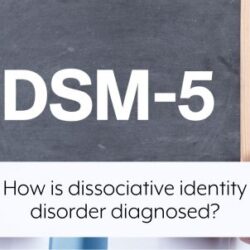
STRUCTURED CLINICAL INTERVIEW FOR DSM-IV DISSOCIATIVE DISORDERS, REVISED (SCID-D-R)
What it measures
A 277-item interview that assesses for amnesia, depersonalisation, derealisation, identity confusion, and identity alteration. Measures presence and severity of symptoms.
Purpose
Diagnosis
Reference
Steinberg, 1994, 1995
Method
Clinician-administered
DISSOCIATIVE DISORDERS INTERVIEW SCHEDULE (DDIS)
What it measures
A 132-item structured interview that assesses the symptoms of the five DSM-IV dissociative disorders, somatisation disorder, borderline personality disorder, and major depressive disorder. The DDIS also assesses substance abuse, Schneiderian first-rank symptoms, trance, childhood abuse, secondary features of dissociative identity disorder, and supernatural/paranormal experiences. Measures presence of symptoms but not severity.
Purpose
Diagnosis
Reference
Ross, 1997; Ross et al, 1989, 1990
Method
Clinician-administered
MULTIDIMENSIONAL INVENTORY OF DISSOCIATION (MID)
What it measures
218-item instrument with 168 dissociation items and 50 validity items. Measures 23 dissociative symptoms and six response sets that serve as validity scales.
Purpose
Diagnosis
Reference
Dell, 2006
Method
Self-report (but scored by clinician)
DISSOCIATIVE EXPERIENCES SCALE (DES)
What it measures
28-item self-report instrument whose items screen primarily for absorption, imaginative involvement, depersonalisation, derealisation, and amnesia.
Purpose
Screening only
Reference
Bernstein & Putnam, 1986, 1993
Method
Self-report
DISSOCIATION QUESTIONNAIRE (DIS-Q)
What it measures
63-item self-report instrument which measures identity confusion and fragmentation, loss of control, amnesia, and absorption.
Developed in Belgium and The Netherlands, the DIS-Q is more commonly used by European than North American clinicians and researchers.
Purpose
Screening only
Reference
Vanderlinden, 1993; Vanderlinden, Van Dyck, Vandereycken, Vertommen, & Verkes, 1993
Method
Self-report
SOMATOFORM DISSOCIATION QUESTIONNAIRE-20 (SDQ-20)
What it measures
20-item instrument that uses a 5-point Likert scale to measure somatoform dissociation. The SDQ-20 items address tunnel vision, auditory distancing, muscle contractions, psychogenic blindness, difficulty urinating, insensitivity to pain, psychogenic paralysis, non-epileptic seizures, and so on. A shorter version, the SDQ-5, is composed of five items from the SDQ-20.
Purpose
Screening only
Reference
Nijenhuis, Spinhoven, Van Dyck, Van der Hart, & Vanderlinden, 1996, 1998; Nijenhuis et al, 1999
Method
Self-report


